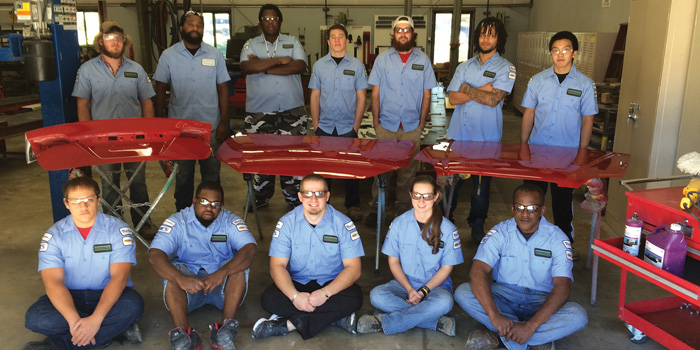
“In Northern Michigan, it seems the average age of an auto body technician is in the 50s. Given that the collision industry has been around for years, being a true bodyman is an art. It’s not just about being a parts changer. What can be done to attract the younger generation into the business and retain them? Is this a problem across the country? It seems that students we see from the tech center up to the college-level program do not stick with the industry. What’s going to happen in the future? I feel that in this business, learning the techniques with guidance is one of the best ways.” — Leslie Oliver, body shop manager, Dean Arbour Chevrolet Cadillac, East Tawas, Mich.
This is a great question and something the Collision Repair Education Foundation hears across the country in talking with all segments of the collision industry.
An Aging Workforce
Like many other technical trades, our industry is facing an aging workforce, and many students are being urged by parents, school counselors and others to go the traditional four-year college route and not consider a technical trade as a career option. In addition to securing and distributing donations to high school and college collision school programs across the country, the Education Foundation is now also focusing on helping to connect students with employers.
Here are some of the initiatives the Education Foundation is taking to address this issue:
- For the past several years, Education Foundation staff have attended, presented and exhibited at the American School Counselor Association Conference, where K through 12 school counselors around the country gather for their annual meeting. We discuss with these individuals the importance of considering this industry as a career option, and that there are many various collision industry segments and career paths students can take that will lead to fulfilling and rewarding opportunities.
- This year, the Education Foundation will be organizing and facilitating career fairs in major markets around the country to help bring local students and industry employers together in order to connect both groups and work toward getting these students placed within the industry. These events have been wildly successful, with attendance ranging from 100 to 400 people per market.
- Understanding that not all collision students are able to attend these events, we’ve been working on a collision student resume database where we’ll invite all high school/college collision students nationwide to submit their information.
- We’re also looking into ways to get in front of the public through awareness events and radio/TV public service announcements, understanding that students are never too young to be provided information about this industry and career options it can offer.
In order for the Education Foundation to not only continue this work but take it to another level, we need to ask that the industry continue to support our initiatives. We provide over $10 million in support each year, and that’s made possible by less than 300 (total) donors. Imagine the work we could do if more of the industry came on board and helped the Education Foundation with these initiatives, allowing us to fully inform the public about the industry and the career opportunities that exist for students around the country.
Also, with school budgets being drastically cut, collision programs are always toward the top of the list for being eliminated due to their costs. So now more than ever, instructors need our support and guidance to ensure they have what they need to graduate productive and efficient entry-level students.
I invite the industry to visit www.CollisionEducationFoundation.org and make a tax-deductible, online donation to support our efforts. Or, contact me with questions and/or concerns at [email protected].













